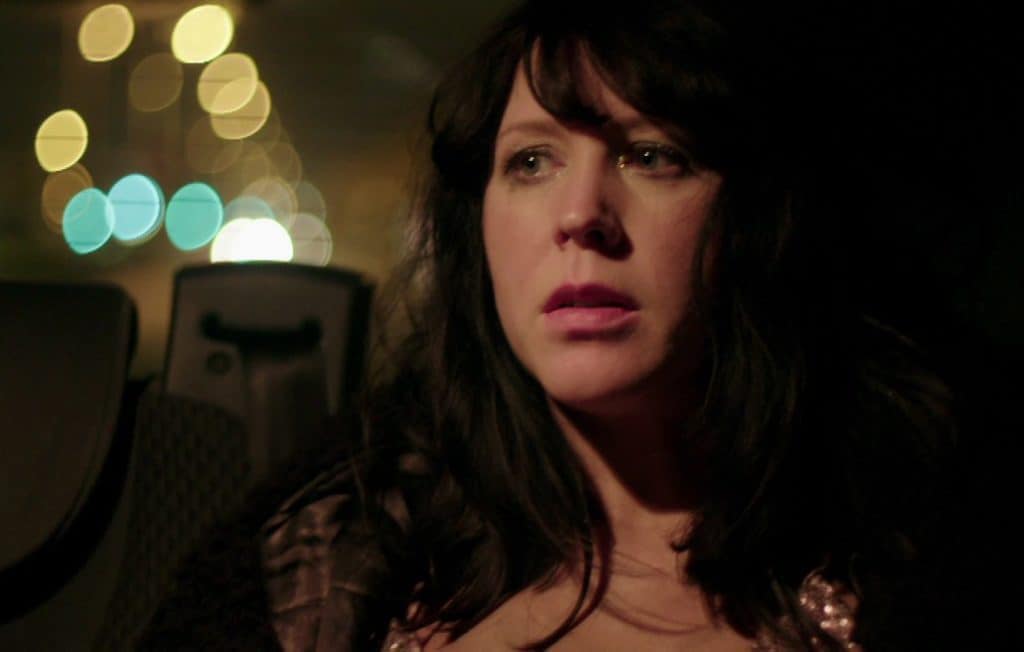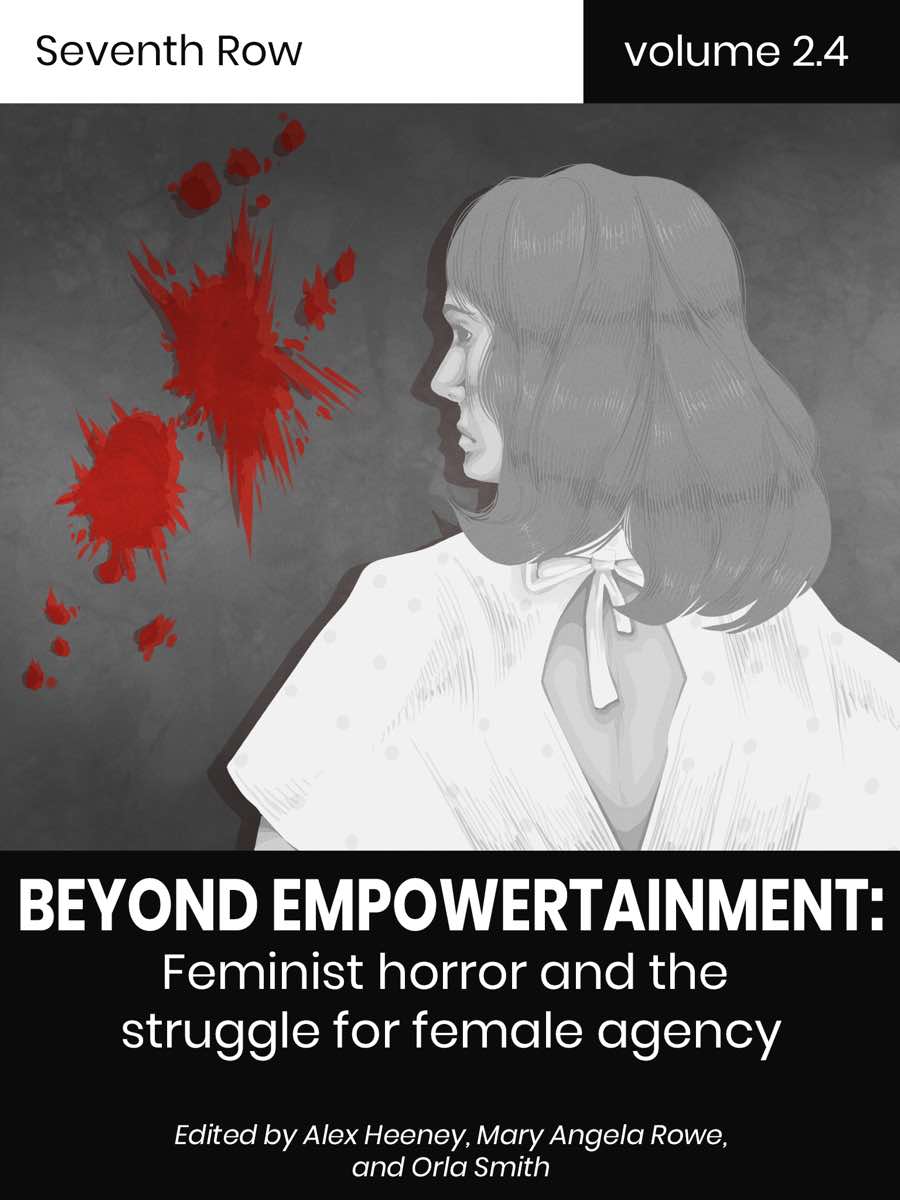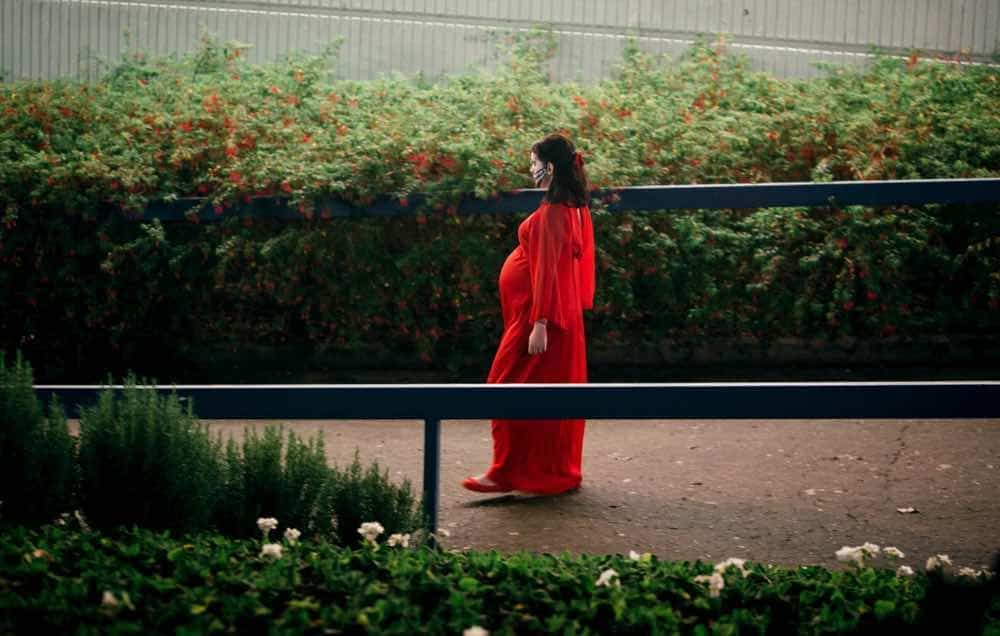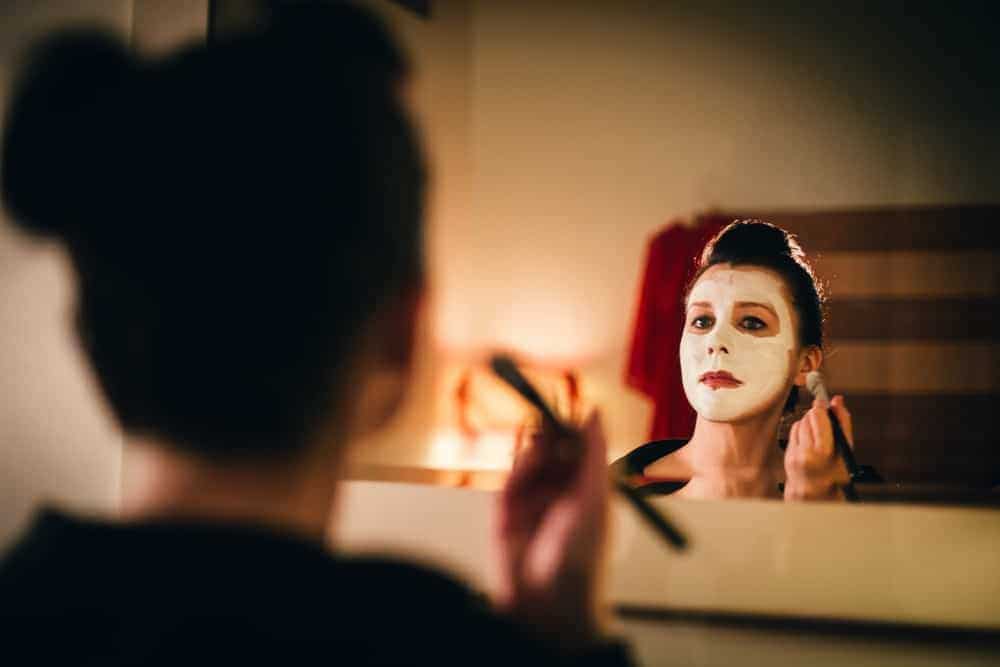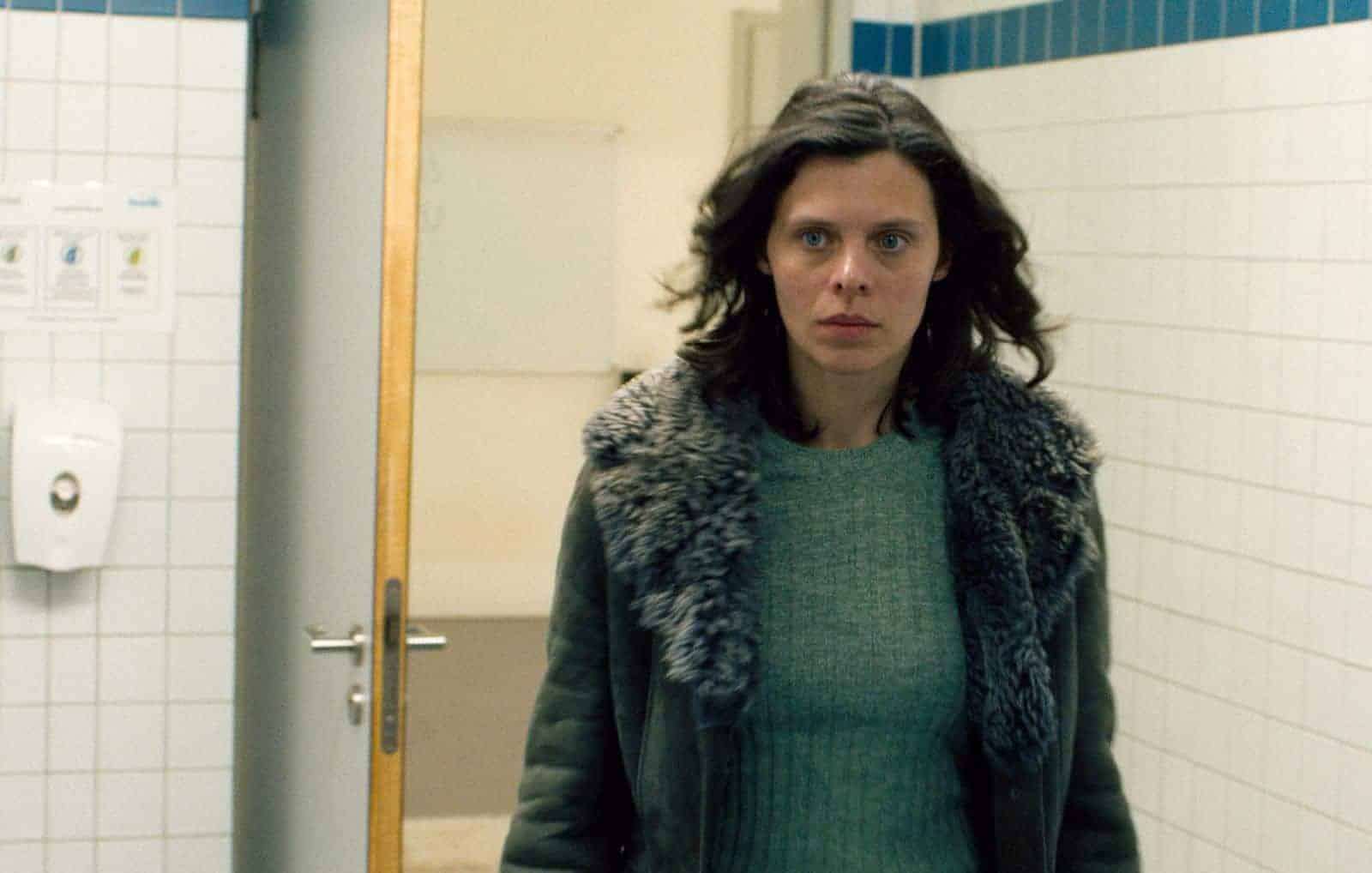Alice Lowe discusses the making of Prevenge, her wickedly funny directorial debut, from conception through to completion. Shot when she was seven months pregnant, the film is a revenge movie in which a foul-mouthed fetus sends its mother, Ruth (Alice Lowe), on a killing spree. This is an excerpt from our forthcoming ebook on feminist horror beyond empowertainment. To read the entire article, get your copy of the book here.
Only in Prevenge, Alice Lowe’s wickedly funny directorial debut, would it seem perfectly natural to castrate your date and then tuck his mum into bed and offer to do her washing. But the film, which Lowe wrote, directed, and starred in while seven months pregnant, is hardly ordinary. It’s a revenge movie in which a foul-mouthed fetus sends its mother, Ruth (Alice Lowe), on a killing spree.
“I wanted to reflect pregnancy and the kind of emotional rollercoaster that you go on hormonally and how vivid those experiences are,” Lowe explained. “As soon as you think, ‘Oh, this is a comedy,’ I pull the rug out from under your feet, and you see something that’s really shocking, like a horror film. Then, suddenly, you’re feeling quite sad for her, and that she’s quite sweet, and then I’m changing it again.”
Lowe wanted to flip the audience’s expectations of the narrative around pregnancy: her character is anything but helpless. When the film opens, we see “a normal woman walking down a road, and she’s pregnant. She goes into this really creepy environment. It’s like the fly walking into the spider’s parlour. As an audience, you feel very used to the man being the predator and the woman being the victim. But, actually, she ends up being the one being dangerous.”
[clickToTweet tweet=”‘I wanted to reflect pregnancy and the kind of emotional rollercoaster that you go on hormonally.'” quote=”I wanted to reflect pregnancy and the kind of emotional rollercoaster that you go on hormonally and how vivid those experiences are.”]
Lowe shot the film from Ruth’s perspective. “The film, the whole thing is subjective. Everything you experience in the film is what she’s experiencing,” Lowe explained. “It’s one person’s perception so it’s a bit like a dream, or it’s her insanity. Nothing is real. I deliberately wanted to unnerve the audience.” For example, “the midwife’s office doesn’t feel like a real place, in a way, because you don’t see the outside of the hospital. You don’t see her going in. That’s true with all of the scenes. They’re all theatrical backdrops for what’s going to happen.” Accordingly, in these scenes with the midwife, Lowe didn’t want to add hospital background sounds because these would add too much realism.
[wcm_restrict]
The film was conceived while Lowe was pregnant. She had wanted to direct for a while, but “it was just taking ages and years and years in development and scriptwriting.” But after Black Mountain Poets was a success, its director, Jamie Adams, was interested in a new script from Lowe. When she came back with a pregnancy revenge story, he loved it, but suggested that she direct it. Lowe recalled him saying, “I do rom-coms, and this is way too dark for me.”
It was an exciting and terrifying prospect. “I thought, ‘Shit, I was just going to do nothing throughout my pregnancy, and now I’m doing everything,” said Lowe. On the other hand, as an actress and freelancer, she was always “really worried about work, about whether I was going to earn any money.” As she was heading towards unpaid maternity leave, getting her first feature made as a solo writer suddenly seemed less scary. “I said ‘yes,’ and I just went for it,” Lowe recalled. This meant they had to make it fast. She recalled telling her producers, “My bump’s getting bigger, and the baby is going to come out at the end of that, so we have to make it now.” And they made it happen. “Before I knew it, we were making it, which was this really joyful, brilliant time.”
For Lowe, acting as the film’s lead was the easy part. She elaborated, “I’ve spent a long time performing in stuff that I’ve written, so I trust myself to perform. I’m a big believer in not over-analyzing a performance, that you should be feeling it, you should be in the zone.” Directing other actors, however, was nerve wracking. “As an actor, you don’t want to feel like you’re treading on other actors’ toes,” she explained. “I hate receiving notes, as an actor. Some of the best directors that I’ve worked with, they don’t give you any notes at all.” Lowe found it bizarre to be “telling [other actors] what to do, and you’re not telling yourself what to do.” But she mitigated this by first and foremost casting the right people, “so they didn’t require much direction anyway,” she noted. “I just prefer actors to trust their own instincts.”
Read more: Breaking boundaries in Kelly Reichardt’s Certain Women >>
Much of the film’s structure was dictated by budgetary and time constraints. “I had to write a script that had as few locations as possible, which meant having long scenes. When I first pitched it, I said it was going to be episodic. It’s this woman going on a journey, and she’s going to meet these characters in a series of two-handers. [Each encounter] is like a mini-play within the film.
[clickToTweet tweet=”I hate receiving notes, as an actor. Some of the best directors don’t give you any notes at all.” quote=”I hate receiving notes, as an actor. Some of the best directors that I’ve worked with, they don’t give you any notes at all.”]
“As I was thinking about each set of two-handers, I wanted each one to have a strong tone,” Lowe recalled. She was influenced by how De Palma, Argento, and Kubrick use colour in horror. “It’s an assault on the senses. It’s bright colours — red, green, blue. It’s got to feel like psychedelic, and a bit like a slap in the face. She’s creeping through the nine circles of hell, and every place that she goes to has got a different atmosphere. But it’s hellish in its own way.” For example, “In the office, it’s icy blues: this icy table and this icy woman, and this sense that this is a whole new hell that she’s wandered into that’s a very cold and clinical environment.”
[clickToTweet tweet=”I’ve filmed lots of low budget stuff. You can make stuff look fantastic for no money.” quote=”I’ve filmed lots of low budget stuff. You can make stuff look fantastic for no money.”]
No stranger to low budget filmmaking, Lowe knew the secret to success was “getting value out of every place that you filmed in.” They couldn’t afford fancy special effects, but with “a bit of legwork, she found locations that suited the film’s tone. For example, they shot the first two-hander in a real reptile shop. Lowe exclaimed, “I’d be stupid to be in reptile shop and not be doing close ups of the spiders! [I was] working with a DOP [director of photography] who who’s absolutely brilliant and spontaneous and happy to just grab stuff, and also a very patient crew who were okay with that, and who weren’t thinking, ‘Oh my God, why is she shooting the moon instead of doing the scene we’re supposed to be doing!?’ I’ve filmed lots of low budget stuff. You can make stuff look fantastic for no money. It’s just a bit of logistics and a bit of taste, really.”
Read more: Julia Ducournau’s Raw is a new kind of female body horror >>
[/wcm_restrict]

